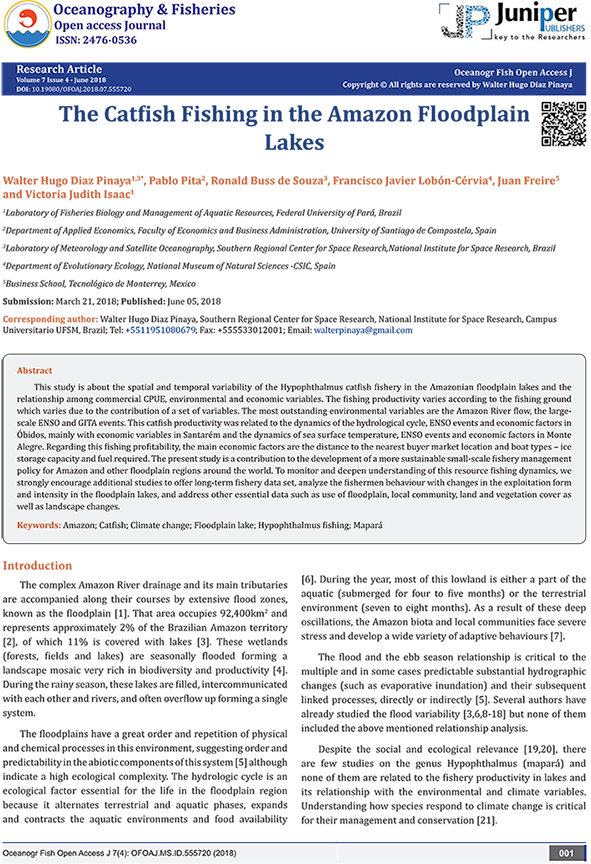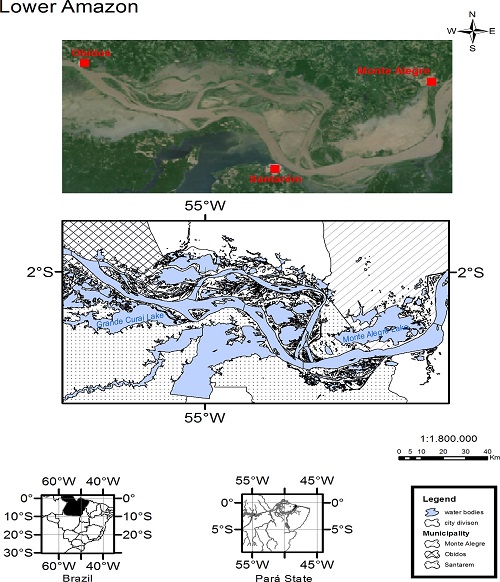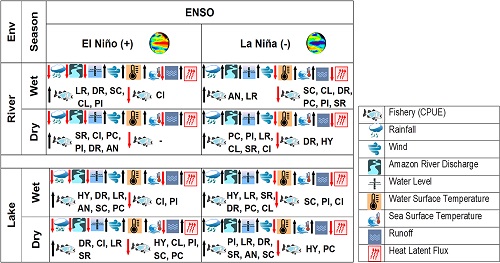Este es el nuevo trabajo, liderado por Walter Pinaya, que acabamos de publicar en la revista Oceanography & Fisheries Open Access Journal sobre la pesca del pez gato Hypophthalmus spp en la llanura de inundación del Amazonas. El acceso al artículo es libre y gratuito:
Archivo de la etiqueta: Investigación
Combinando el conocimiento de los pescadores y herramientas de gestión baratas en la gestión de pesquerías recreativas marinas: el caso de estudio de las pesquerías de calamar y sepia en la Ría de Vigo
Se acaba de publicar en la revista Fisheries Management and Ecology nuestro artículo sobre el uso del conocimiento de los pescadores y de herramientas de gestión baratas, aplicado a la pesquería recreativa de calamares y sepias en la Ría de Vigo Este artículo forma parte de los resultados del Proyecto RECREGES. El título original:
Combining fishers’ knowledge and cost-effective monitoring tools in the management of marine recreational fisheries: A case study of the squid and cuttlefish fishery of the Ría of Vigo (NW Spain).
Abstract
A new methodology based in the use of fishers’ knowledge and cost-effective tools to obtain information about marine recreational fisheries (MRF) is presented. The squid and cuttlefish fishery of the Ría of Vigo (NW Spain) was selected because it is managed in a data-poor environment. In-depth interviews (57) were conducted with fishers, collecting ecological and socio-economic information. A cartography of fishing grounds based on their knowledge was obtained, while the intensity of effort and catches was mapped by the monitoring of two vessels with low-cost GPS data loggers. The 102 shore anglers and 248 recreational boats catch 8 t/year of European squid Loligo vulgaris and 11 t/year of common cuttlefish Sepia officinalis (11% of total catches on these species in the area). Shore anglers fish from 11 ports, while boat fishers use 14 fishing grounds (covering 30 km2). Most of the catches (86%) are landed by boats, and their CPUE is higher in the outer part of the Ría of Vigo. The use of fishers’ knowledge and cost-effective monitoring is encouraged to obtain information for the management of MRF. Given the economic contribution of MRF (260,000 €/year in direct expenses), this activity should be considered in the regulations.
La pesca y el clima en el Amazonas
En este artículo que acabamos de publicar en PlosOne, analizamos las relaciones entre las pesquerías multi-específicas y el clima en el bajo Amazonas.
Área de estudio del trabajo en el Río Amazonas
Este es el resumen del trabajo:
This paper aims to describe the spatial-temporal variability in catch of the main fishery resources of the Amazon River and floodplain lakes of the Lower Amazon, as well as relating the Catch per Unit of Effort with anomalies of some of the Amazon River, atmosphere and Atlantic Ocean system variables, determining the influence of the environment on the Amazonian fishery resources. Finfish landings data from the towns and villages of the Lower Amazon for the fisheries of three sites (Óbidos, Santarém and Monte Alegre), were obtained for the period between January 1993 and December 2004. Analysis of variance, detrended correspondence analysis, redundancy analysis and multiple regression techniques were used for the statistical analysis of the distinct time series. Fisheries production in the Lower Amazon presents differences between the Amazon River and the floodplain lakes. Production in the Amazon River is approximately half of the one of the floodplain lakes. This variability occurs both along the Lower Amazon River region (longitudinal gradient) and laterally (latitudinal gradient) for every fishing ground studied here. The distinct environmental variables alone or in association act differently on the fishery stocks and the success of catches in each fishery group studied here. Important variables are the flooding events; the soil the sea surface temperatures; the humidity; the wind and the occurence of El Niño-Southern Oscillation events. Fishery productivity presents a large difference in quantity and distribution patterns between the river and floodplain lakes. This variability occurs in the region of the Lower Amazon as well as laterally for each fishery group studied, being dependent on the ecological characteristics and life strategies of each fish group considered here.
Relaciones entre las pesquerías y el clima en el Amazonas bajo los fenómenos de El Niño y la Niña.
El uso del conocimiento ecológico tradicional de los pescadores y modelos participativos como vía para avanzar en la co-gestión del pulpo
Este es el artículo que acabo de publicar en Fisheries Research, y que se puede descargar de manera gratuita hasta el 2 de junio de 2016 en este enlace.
El título y el resumen del trabajo:
The use of the traditional ecological knowledge of fishermen, cost-effective tools and participatory models in artisanal fisheries: Towards the co-management of common octopus in Galicia (NW Spain)
Highlights
- • We have monitored a Spanish octopus fishery by using GPS-loggers and logbooks.
- • We have also used the knowledge of octopus fishermen to map their fishing grounds.
- • Annually, 700 vessels use traps to catch 2000 t of octopus that are sold for 13 M €.
- • The 174 km2 of fishing grounds identified were the most fished and valuable areas.
- • Creation of a long term co-management plan is recommended to ensure sustainability.
Abstract
The fishery of octopus Octopus vulgaris in Galicia (NW Spain) is a paradigmatic example of top–down management that generates conflicts between fishermen and policy makers. In the absence of scientific information to support the management of this data poor artisanal fishery, the traditional ecological knowledge (TEK) of fishermen was tested to map the distribution of fishing grounds and GPS data-loggers and log-books in order to estimate the intensity of effort and CPUE. Furthermore, a description of the social, technical and ecological features of the fishery was obtained to be used in conjunction with the results of questionnaires answered by experts, to improve the current management and to ensure the long-term sustainability of one of the most traditional and economically relevant fisheries in Galicia. Approximately, 700 vessels use traps in Galician coastal waters to catch 2000 t of octopus annually, with a market value of 13 M Є. Octopus vessels also use gillnets, hooks and lines and shellfish gathering to target common spider crab Maja brachydactyla, goose barnacle Pollicipes pollicipes and other species. The fishermen operating in the study area of the Ría of Arousa identified 174 km2 of octopus fishing grounds, mainly distributed in the mid and outer parts of the study area. The fishing effort was exerted on the same rocky reefs, also the most valuable fishing grounds in terms of CPUE. The use of new techniques and tools based on participatory models is encouraged to obtain cost-effective information of this fishery and in general of other fisheries in data poor environments. Likewise, the creation of a long-term co-management plan is recommended to ensure the sustainability of stocks and the profitability of this artisanal fleet.
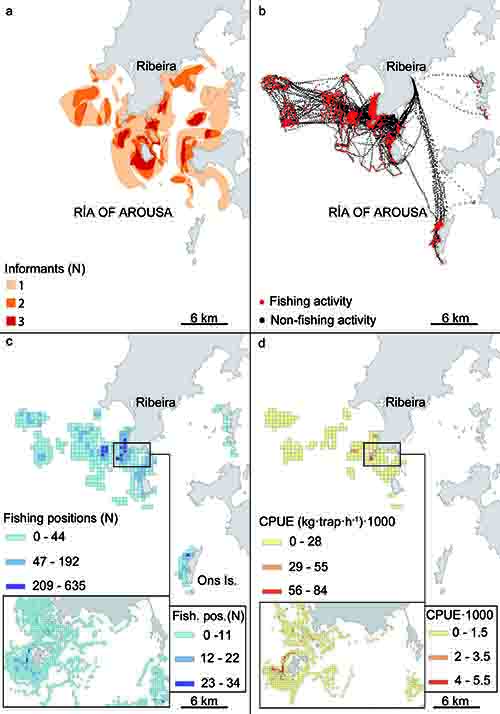
Buceando en letras
Me dedico últimamente al buceo en un medio que no había experimentado nunca, un medio que me ha supuesto afrontar más complicaciones que la más profunda de las inmersiones: el buceo en textos legales, en concreto en normativa sobre pesca recreativa en España.
Me sorprende la cantidad de regulaciones vigentes de todos los niveles que he recopilado, unos 170 textos. Pero más me sorprende la falta de una herramienta abierta y fiable que facilite la búsqueda de normativa en vigor. También me sorprende que a los jueces españoles les hayan retirado la suscripción a un buscador privado y tengan que realizar sus búsquedas en Google y en los buscadores de los boletines oficiales, un medio ambiente de lo más diverso y complejo, poco dado a facilitar búsquedas comprensivas. En fin, esto son los resultados de un análisis preliminar que he obtenido usando el paquete «tm» del estadístico R.
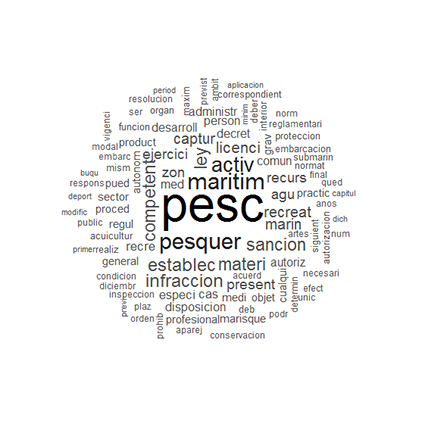
Nube de palabras realizada con los textos básicos de la normativa española en materia de pesca recreativa. El tamaño y el color están relacionados con la frecuencia.
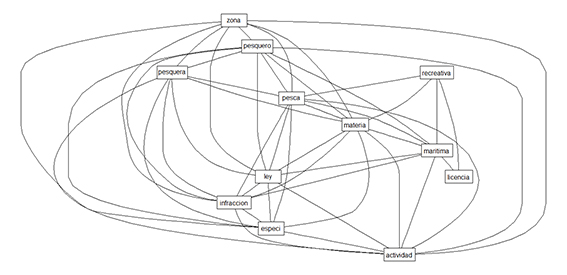
Relaciones entre las palabras más frecuentes empleadas en los textos básicos de la normativa española en materia de pesca recreativa.
Este trabajo se enmarca dentro del proyecto RECREGES, para el que se solicita la colaboración de los pescadores recreativos de Galicia o el Norte de Portugal, contestando a este cuestionario.

